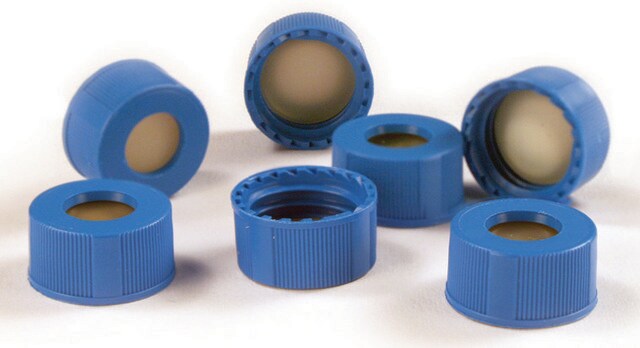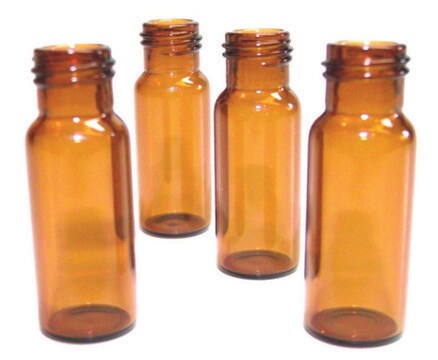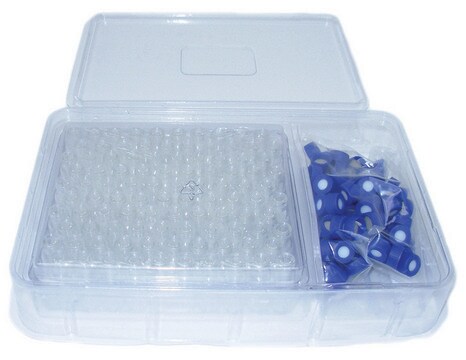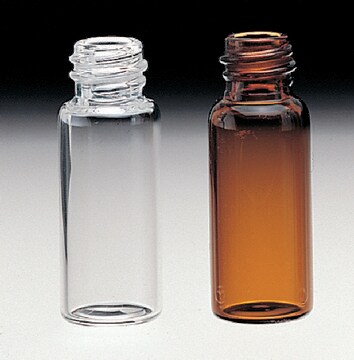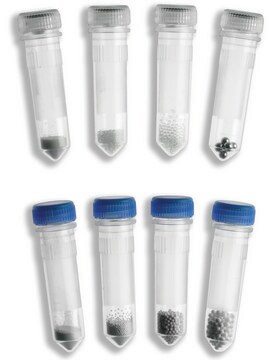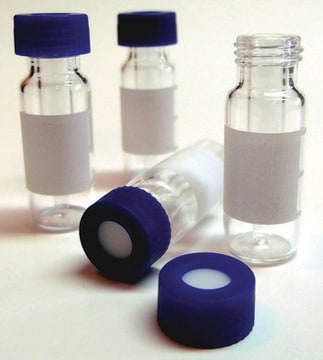推荐产品
材料
amber glass vial (with marking spot)
light blue polypropylene cap (Mass Spec quality)
natural PTFE/silicone septa
特點
closure type screw top vial
包裝
pkg of 100 ea
外徑 × 高度 × 內徑
12 mm × 32 mm × 6 mm
容積
2 mL
接頭
thread for 9 mm
相容性
for use with Agilent/HP
for use with Thermo Fisher
for use with Waters
正在寻找类似产品? 访问 产品对比指南
一般說明
These vials and closures are designed, engineered, and manufactured for optimum performance in HPLC, GC/MS, and LC/MS applications. All of the parts of the vial system (vial, cap, and septum) can come into contact with the sample and are critical to the outcome of the analysis.
We recommend using LA vials with MSQ polypropylene cap/PTFE silicone septa. This cap and septa combination was purposely designed for use with mass spectrometry. It shows little to no background contamination when compared to other cap and septa products in the marketplace.
相關產品
其他客户在看
商品
Glyphosate and related compounds are measured in oatmeal and infant cereal using ion-exchange polymer-based particles for HPLC and SPE. Low level detection was obtained.
实验方案
Potency testing in marijuana-infused edibles is an important problem that analytical labs are facing due to the complexity of the involved matrices. Concentration of active ingredients in these edibles can range from a few parts per million to 3.5 parts per thousand. This application demonstrates the extraction and HPLC-UV analysis of the active compounds.
Rapid potency testing of marijuana-infused edibles using LC/MS on a biphenyl stationary phase detected eleven cannabinoids.
HPLC separation of 17 important cannabinoids including CBD, delta 9 THC and THCA. Read the application note
相关内容
Pesticide residue testing of turmeric and other (dried) spices is challenging due to their complex compositions and high matrix. An efficient SPE clean-up can be achieved by a new Dual-layer cartridge.
我们的科学家团队拥有各种研究领域经验,包括生命科学、材料科学、化学合成、色谱、分析及许多其他领域.
联系技术服务部门